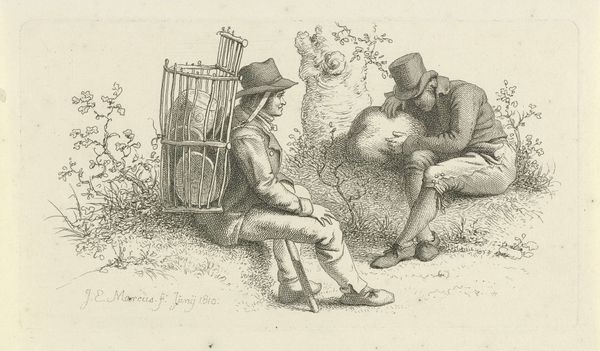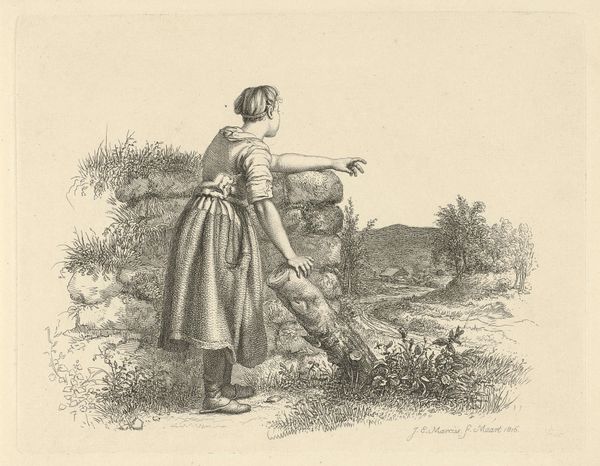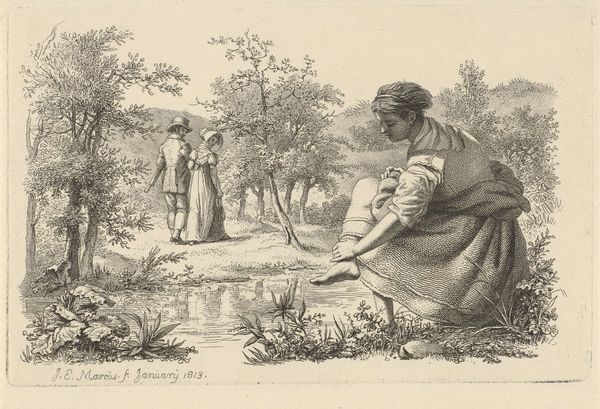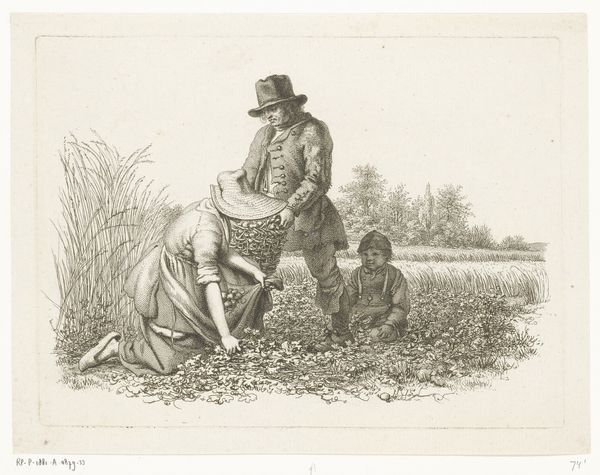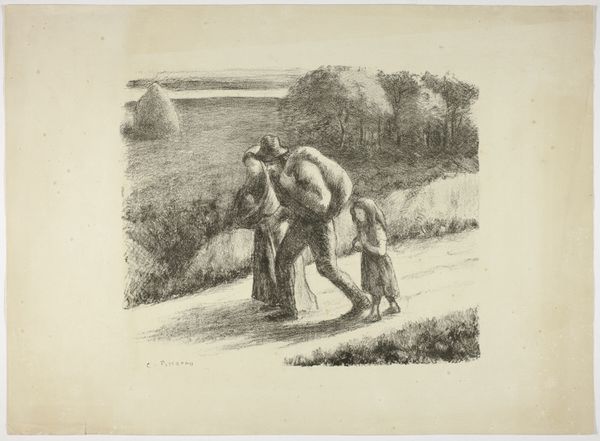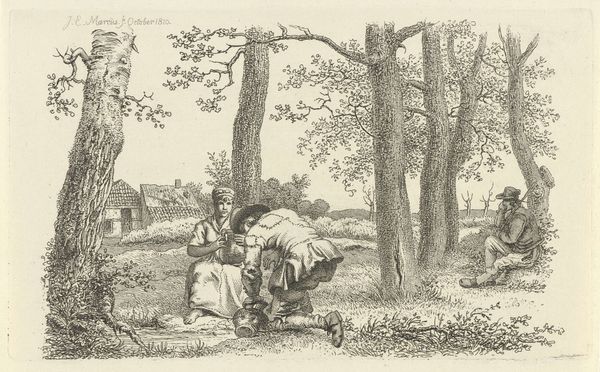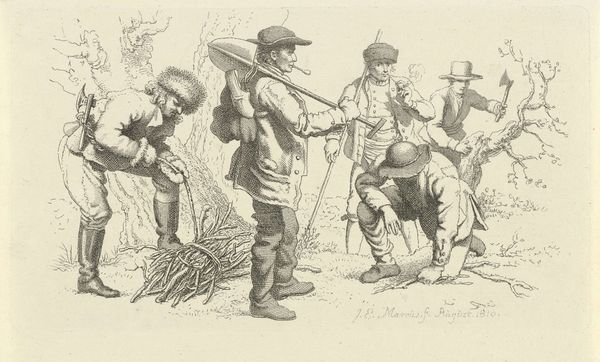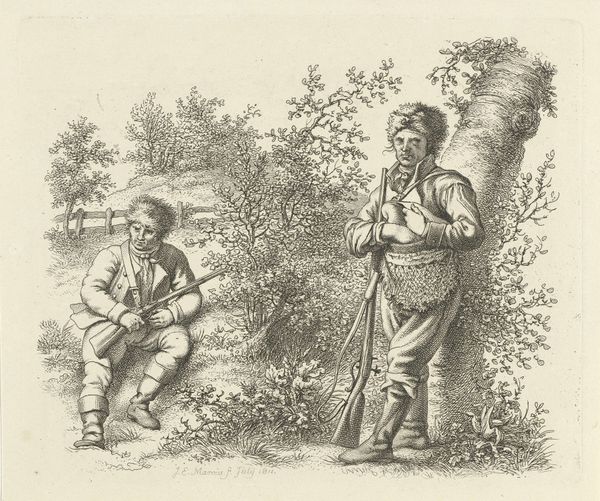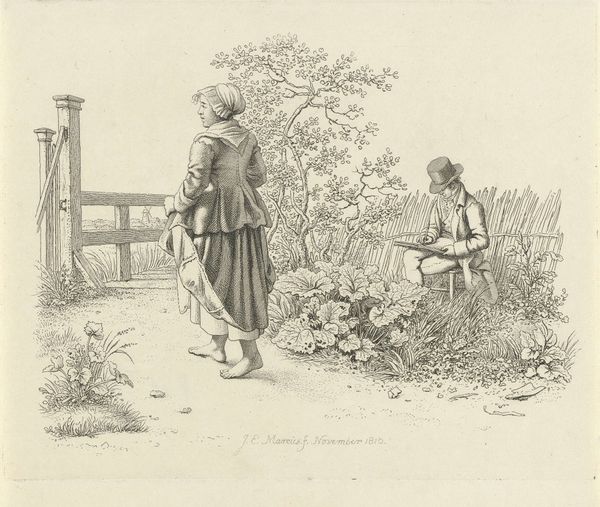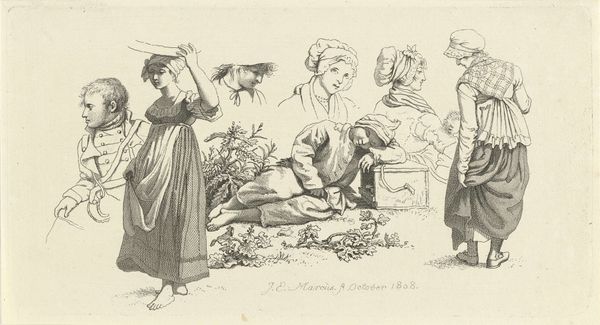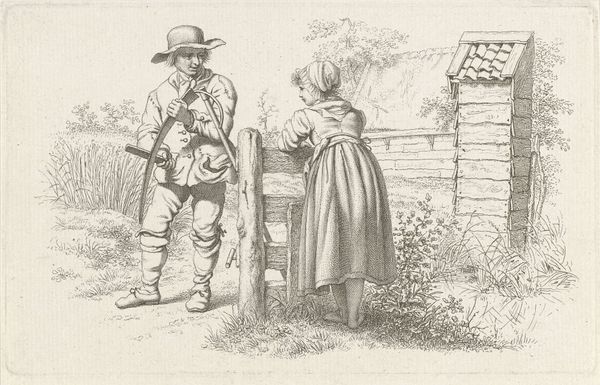
drawing, print, etching, paper, ink, engraving
#
drawing
#
light pencil work
#
quirky sketch
# print
#
pen illustration
#
pen sketch
#
etching
#
pencil sketch
#
landscape
#
figuration
#
paper
#
personal sketchbook
#
ink
#
sketchwork
#
romanticism
#
pen-ink sketch
#
sketchbook drawing
#
genre-painting
#
engraving
#
fantasy sketch
Dimensions: height 123 mm, width 172 mm
Copyright: Rijks Museum: Open Domain
Curator: This is "Maaiende man en een zittende vrouw," or "Mowing Man and a Seated Woman," created in 1811 by Jacob Ernst Marcus. The work employs etching, engraving, and ink on paper. It’s currently held at the Rijksmuseum. What strikes you immediately about it? Editor: It has a stark, almost melancholy feel to it. The detail is incredible, considering the simplicity of the lines. The overall tonal range gives it a unique atmospheric presence. Curator: Indeed. Marcus created this during a period of great social and political upheaval in Europe, during the Napoleonic wars and in the period in which the Netherlands was incorporated into the French Empire. The rural scenes of working people could be seen as holding various sociopolitical implications, expressing values tied to simplicity and hard work. Editor: The symbols feel almost deliberately commonplace. The man's posture, bent in labor, and the woman quietly seated; what feelings would these scenes have evoked for people at the time? Were they intended as celebrations of common life or laments of harsh living? Curator: Possibly both. Romanticism favored humble subjects but wasn't blind to social realities. The rural population made up the majority, but this social group held no power in that age. Editor: So, is the woman with her back turned perhaps symbolic of the relative value then given to women, and the peasantry’s silent endurance? The lack of eye contact feels very poignant, even isolating. Curator: That’s quite possible, yet equally valid is to see that this type of Romanticist portrayal of rural people and life valorizes those very social realities, offering an alternative social perspective to city-dwellers and higher classes. Editor: It's fascinating how an ostensibly simple genre painting reveals such intricate layers of social meaning, wouldn't you say? It makes you consider what these symbols and forms meant and still communicate to our world. Curator: I completely agree. It’s a small etching, but it captures a crucial historical moment, rendered intimate by the personal sketch work. It showcases art's remarkable capacity to reveal historical realities that still reverberate today.
Comments
No comments
Be the first to comment and join the conversation on the ultimate creative platform.
